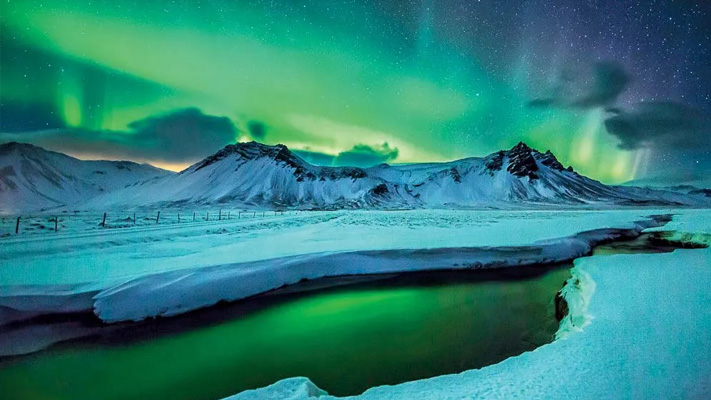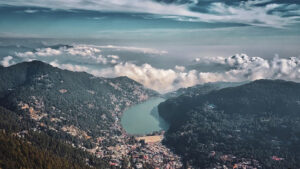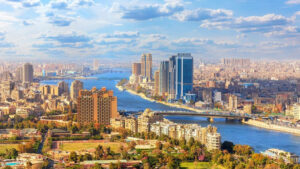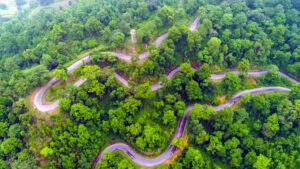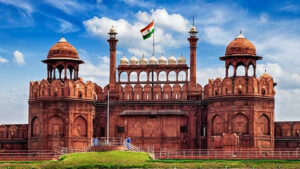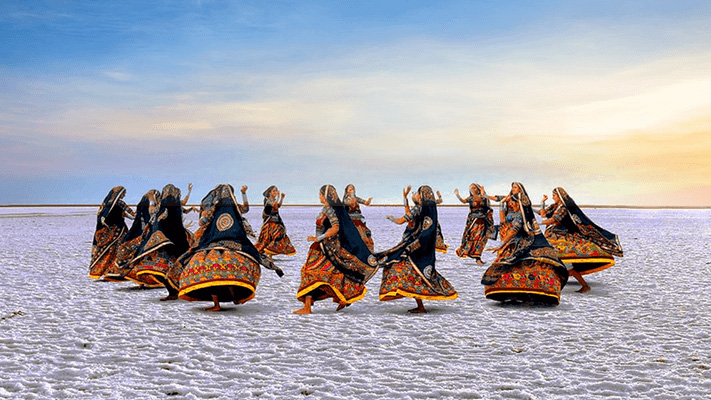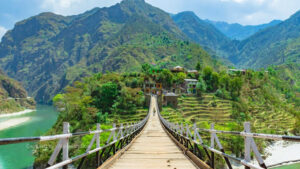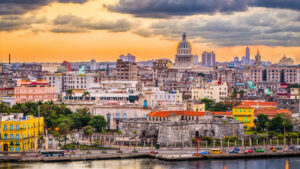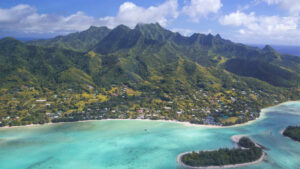Top 10 Things to See and Do in Iceland

Iceland is a land of contrasts and extremes. Majestic glaciers stand tall against rugged volcanic landscapes, while tranquil hot springs offer a haven of relaxation amidst the harsh terrain. The northern lights illuminate the dark winter skies, painting the heavens with vivid shades of green and pink. In Iceland, the weather can change in the blink of an eye, with rain, snow, and sunshine all possible in a single day. Despite the unpredictable weather, the people of Iceland are warm and welcoming, eager to share their unique culture and traditions with visitors. Iceland is a country that inspires awe and wonder, where the natural beauty of the landscape is simply breathtaking.

Iceland is a land of dramatic natural beauty, with stunning glaciers, volcanoes, and waterfalls. Here are the top 10 things to see and do in Iceland:
1. Visit the Blue Lagoon
The Blue Lagoon is one of Iceland’s most popular tourist attractions and is known for its crystal-clear, mineral-rich geothermal waters. Here are some of the reasons why it is special and what you can do there:
1. The water – The Blue Lagoon’s water is heated by underground geothermal activity and is rich in minerals like silica and sulfur. The water is a vibrant, milky blue color, making it an incredibly photogenic spot.
2. The relaxation – The Blue Lagoon is a great place to relax and unwind, with a variety of spa treatments, including massages, facials, and body wraps. There are also saunas and steam rooms to enjoy.
3. The scenery – The Blue Lagoon is surrounded by volcanic rocks and other stunning scenery, making it a unique and memorable spot to visit.
4. Swim-up bar – The Blue Lagoon has a swim-up bar where you can order drinks and snacks while soaking in the warm waters.
5. Silica mud mask – One of the most popular activities at the Blue Lagoon is the silica mud mask. Visitors can apply the white silica mud to their faces and bodies, which is said to have healing properties for the skin.
6. Restaurant – The Blue Lagoon has a restaurant called LAVA, which serves up delicious Icelandic cuisine, including fresh seafood and locally sourced ingredients.

2. See the Northern Lights
The Northern Lights, also known as Aurora Borealis, are a natural phenomenon that can be seen in the high-latitude regions of the Northern Hemisphere. Here’s why they are special and what you can do to see them:
1. The beauty – The Northern Lights are a stunning display of color and light, with green, blue, purple, and pink hues dancing across the sky.
2. The unpredictability – The Northern Lights are notoriously unpredictable and can appear at any time during the night. This makes them an exciting and thrilling sight to see.
3. The scientific explanation – The Northern Lights are caused by charged particles from the sun colliding with the Earth’s atmosphere, creating a colorful display of light.
4. The cultural significance – The Northern Lights have been a source of inspiration for many cultures and are deeply ingrained in the mythology and folklore of Northern European countries.
5. Viewing options – There are several ways to see the Northern Lights, including taking a guided tour, renting a car and driving to a remote location, or even staying in a glass igloo or bubble hotel for a unique viewing experience.
6. Time of year – The best time to see the Northern Lights is during the winter months, from October to March, when the nights are longer and darker.
3. Explore Reykjavik
Reykjavik is the capital and largest city of Iceland, and is a popular destination for tourists visiting the country. Here are some of the reasons why Reykjavik is special and what you can do there:
1. Vibrant culture – Reykjavik is known for its vibrant arts and culture scene, with numerous galleries, museums, and festivals throughout the year.
2. Beautiful architecture – Reykjavik is home to many unique and colorful buildings, including the iconic Hallgrimskirkja church and the Harpa concert hall.
3. Delicious cuisine – Reykjavik has a thriving food scene, with many restaurants offering delicious Icelandic cuisine, including fresh seafood and traditional dishes like fermented shark and smoked lamb.
4. Outdoor activities – Reykjavik is surrounded by stunning natural scenery, and there are many outdoor activities to enjoy, including hiking, whale watching, and horseback riding.
5. Hot springs – Reykjavik is home to several hot springs and geothermal pools, including the famous Blue Lagoon.
6. Nightlife – Reykjavik has a vibrant nightlife, with many bars and clubs staying open late into the night.

4. Visit the Golden Circle
The Golden Circle is a popular tourist route in Iceland that covers around 300 km of stunning natural scenery and iconic landmarks. Here’s why it is special and what you can do there:
1. The attractions – The Golden Circle route includes three main attractions: Thingvellir National Park, Geysir, and Gullfoss waterfall. Thingvellir is a historic site and geological wonder, Geysir is a geothermal area with bubbling mud pools and spouting geysers, and Gullfoss is a breathtaking waterfall.
2. The natural scenery – The Golden Circle route takes you through some of Iceland’s most stunning natural scenery, including lava fields, hot springs, and rugged mountains.
3. Accessibility – The Golden Circle is easily accessible from Reykjavik and is a popular day trip for tourists.
4. Flexibility – The Golden Circle can be explored at your own pace, with the option to take guided tours or drive yourself.
5. Other attractions – There are many other attractions along the Golden Circle route, including the Kerið volcanic crater and the Faxi waterfall.
6. Historical significance – Thingvellir National Park is a UNESCO World Heritage site and was the site of Iceland’s first parliament, making it an important historical site.
5. Go on a Glacier Hike
Glacier hiking is a popular activity for tourists visiting Iceland, offering a unique and unforgettable experience of the country’s stunning natural scenery. Here’s why glacier hiking is special and what you can expect:
1. The natural beauty – Glacier hiking takes you through some of Iceland’s most stunning natural scenery, including glaciers, ice caves, and frozen waterfalls.
2. The adventure – Glacier hiking is a thrilling and adventurous activity, giving you the opportunity to explore and climb on the ice.
3. The guide – Glacier hiking tours are led by experienced guides who can provide information about the local environment and ensure your safety on the ice.
4. The equipment – Glacier hiking tours provide all the necessary equipment, including crampons, ice axes, and helmets, to ensure that you are properly equipped for the hike.
5. The challenge – Glacier hiking is a physical challenge, requiring some level of fitness and endurance, but it is also a rewarding and satisfying experience.
6. The educational experience – Glacier hiking tours can also be an educational experience, providing insights into the science of glaciers and the effects of climate change on the environment.

6. See the Jökulsárlón Glacier Lagoon
The Jökulsárlón glacier lagoon is a stunning natural wonder located in the southeastern part of Iceland, and is a popular destination for tourists visiting the country. Here’s why it is special and what you can do there:
1. The natural beauty – The Jökulsárlón glacier lagoon is a breathtaking sight, with crystal clear blue waters surrounded by towering glaciers and icebergs.
2. The wildlife – The lagoon is home to a variety of wildlife, including seals that can often be seen swimming in the water.
3. Boat tours – Visitors can take boat tours of the lagoon, offering a unique perspective on the icebergs and glaciers.
4. Ice cave tours – Nearby, there are also ice caves that can be explored on guided tours.
5. Photography – The Jökulsárlón glacier lagoon is a popular spot for photography, with stunning views and unique lighting conditions.
6. Accessibility – The Jökulsárlón glacier lagoon is easily accessible by car and is located along the Ring Road, making it a popular stop on a road trip around Iceland.
7. Visit Vatnajökull National Park
Vatnajökull National Park is located in the southeastern part of Iceland and is the largest national park in Europe, covering over 14% of Iceland’s land area. Here’s why it is special and what you can do there:
1. The glaciers – Vatnajökull National Park is home to some of the largest glaciers in Europe, including the Vatnajökull glacier, which covers an area of over 8,000 square kilometers.
2. The natural beauty – The park offers stunning views of the glaciers, mountains, and rivers, as well as volcanic landscapes and lava fields.
3. Hiking – There are numerous hiking trails in the park, ranging from easy walks to challenging multi-day treks.
4. Ice cave tours – Visitors can take guided tours of the ice caves located in the glaciers, offering a unique and unforgettable experience.
5. Wildlife – The park is home to a variety of wildlife, including reindeer, arctic foxes, and birds.
6. Cultural heritage – The park has a rich cultural heritage, with historic sites such as the Skaftafell farmstead and the Jökulsárgljúfur canyon.

8. Go whale watching
Whale watching is a popular activity in Iceland, as the country’s waters are home to a variety of whale species, including humpback whales, minke whales, and blue whales. Here’s why whale watching is special and what you can expect:
1. The whales – Whale watching offers the opportunity to see these majestic creatures up close in their natural habitat, an experience that is both thrilling and awe-inspiring.
2. The wildlife – In addition to whales, whale watching tours also provide the chance to see other marine life, such as dolphins, seals, and seabirds.
3. The scenery – Whale watching tours often take place against the backdrop of Iceland’s stunning coastline, offering breathtaking views of the rugged coastline and surrounding mountains.
4. The education – Many whale watching tours also provide educational information about whales and their habitat, allowing visitors to gain a greater understanding and appreciation of these magnificent creatures.
5. The adventure – Whale watching is a thrilling and exciting activity, as sightings can be unpredictable and each tour is unique.
6. The environmental impact – Whale watching tours are often conducted in a responsible and sustainable manner, with a focus on minimizing the impact on the whales and their habitat.
9. Visit the Westfjords
The Westfjords is a remote and rugged region located in the northwestern part of Iceland, known for its dramatic landscapes, unique wildlife, and rich cultural heritage. Here’s why it is special and what you can do there:
1. The scenery – The Westfjords is home to some of the most stunning and dramatic landscapes in Iceland, including towering mountains, deep fjords, and rugged coastline.
2. Wildlife – The region is also home to a variety of unique and rare wildlife, such as the Arctic fox, the puffin, and the Icelandic gyrfalcon.
3. Outdoor activities – The Westfjords is a popular destination for outdoor activities, such as hiking, kayaking, and bird watching.
4. Hot springs – The region is also home to a number of natural hot springs, offering a relaxing and rejuvenating experience.
5. Cultural heritage – The Westfjords has a rich cultural heritage, with historic sites such as the Museum of Sorcery and Witchcraft in Hólmavík and the Ísafjörður Maritime Museum.
6. Road trips – The Westfjords is a popular destination for road trips, with the region’s winding roads and breathtaking scenery offering a unique and unforgettable driving experience.

10. Explore the Snaefellsnes Peninsula
The Snæfellsnes Peninsula is a scenic region located in western Iceland, known for its dramatic coastline, volcanic landscapes, and cultural heritage. Here’s why it is special and what you can do there:
1. The scenery – The Snæfellsnes Peninsula is known for its stunning and diverse landscapes, including black sand beaches, sea cliffs, and glaciers.
2. Volcanoes – The region is home to the Snæfellsjökull volcano, which is famous for its appearance in Jules Verne’s novel “Journey to the Center of the Earth.”
3. Wildlife – The Snæfellsnes Peninsula is home to a variety of wildlife, such as seals, whales, and seabirds.
4. Outdoor activities – The region offers a range of outdoor activities, such as hiking, kayaking, and whale watching.
5. Cultural heritage – The Snæfellsnes Peninsula is home to a number of historic and cultural sites, such as the iconic Kirkjufell mountain, the Búðakirkja black church, and the traditional fishing village of Arnarstapi.
6. Road trips – The Snæfellsnes Peninsula is a popular destination for road trips, with the region’s winding roads and stunning scenery offering a unique and unforgettable driving experience.
Overall, Iceland is a nature lover’s paradise, with plenty of unique and exciting experiences to be had.


